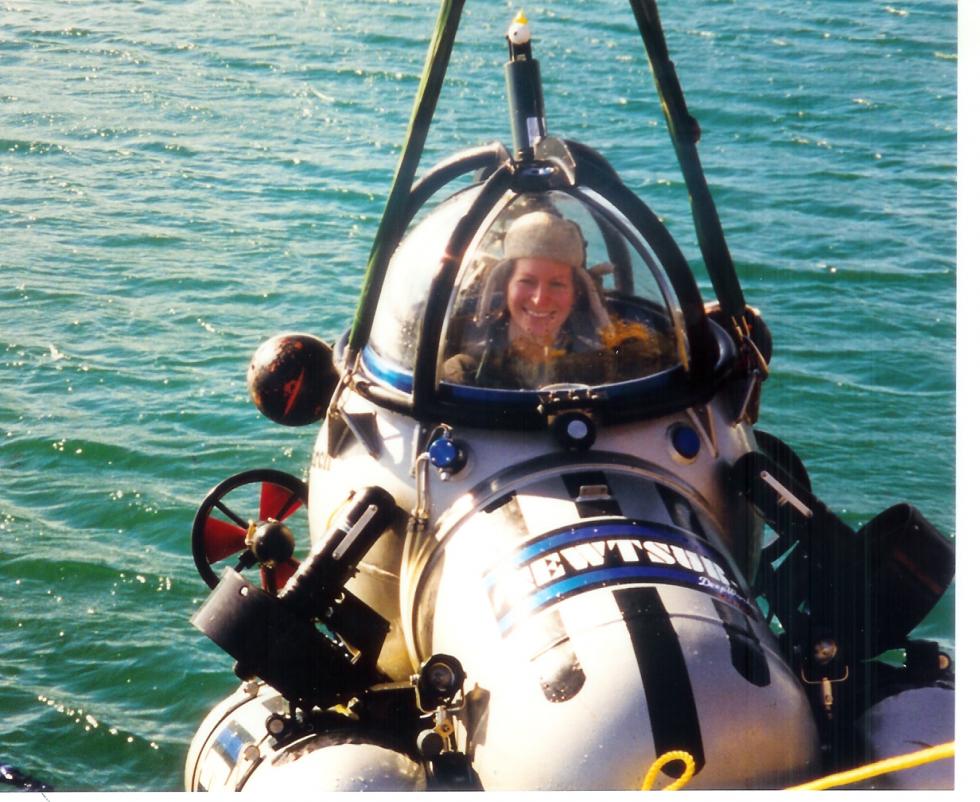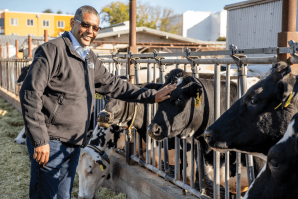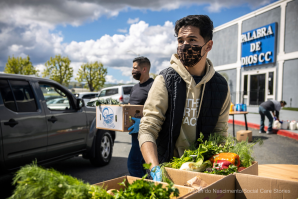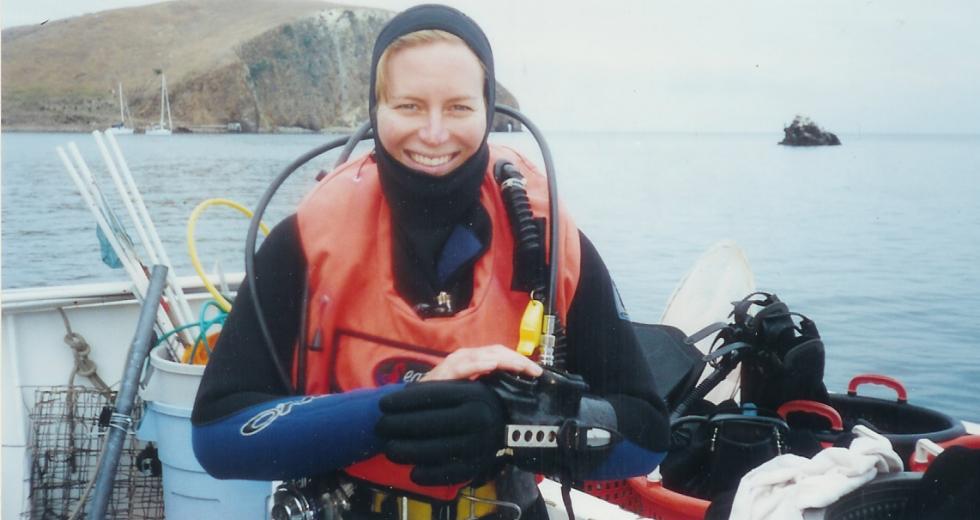The ocean is the “blue heart of our planet,” in the words of legendary oceanographer Dr. Sylvia Earle. But this massive life support system, which covers more than 70 percent of the Earth’s surface and provides most of the oxygen in our atmosphere, is in crisis: Under threat from global warming, pollution, overfishing and other forms of human interference, we’re at a crucial turning point. And currently, just 8 percent of our oceans are protected.
Amber Mace, CEO of the California Council on Science and Technology, has devoted much of her academic and professional life to researching, exploring, and protecting the ocean. Before joining CCST in 2013, her coastal career included National Geographic submersible expeditions, state and federal Sea Grant fellowships, a position as the executive director of the California Ocean Protection Council and being named a “Coastal Hero” by Sunset magazine.
Growing up along the California coast, Mace was always fascinated by the sea. “My earliest memories are of camping at the coast with my family and eating clams we’d collected,” she says. In sixth grade, eager to learn more about the ocean, she chose a sea-focused camp on the Marin Headlands for her first (and only) opportunity to attend summer camp. The experience culminated in a boat trip to the Farallon Islands, which “blew my mind,” Mace says. “It was such a foundational trip for me to see and learn about the diversity of resources and beauty out there in the ocean. I was hooked. That’s when I decided I wanted to be a marine scientist.”
Her passion for the sea carried her to the rowing team in high school, then to UC Berkeley, where she decided to leave the ocean’s surface and go underwater: She got her SCUBA certification through Berkeley’s scientific diving program, which proved to be transformative.
“The program was so powerful,” Mace recalls. “It was like boot camp, a crucible of intensity and immersion. We were learning how to survive, how to conduct research in a safe way – and in order to do that, we had to find out all the different ways you can die underwater. I loved the deep challenge of it, pushing up against my physical and mental limits, and going through that with a group of incredible people.”
After getting her undergraduate degree in geography, Mace joined the National Marine Sanctuary Program in San Francisco, where she led the development of a visitor center on Crissy Field – “the best job in the world,” Mace says. There, she also got to apply her SCUBA experience as an archeological research diver in a search for the oldest known shipwreck on the West Coast, the Spanish galleon San Agustín, which sank off Point Reyes in 1595. The expedition in Drakes Bay, led by the National Oceanic and Atmospheric Administration and the National Park Service, was in great white shark feeding grounds. Working with a team who was operating the sophisticated surveying equipment and effectively deploying a 50-foot diameter shark net to keep everyone safe, the expedition was “a problem-solver’s paradise,” Mace says.
It wasn’t the last time she’d find herself in zero-visibility, shark-infested waters. Mace was also trained to pilot a one-person submersible through a NOAA/National Geographic Sustainable Seas Expedition to explore the depths of the Gulf of the Farallones National Marine Sanctuary. Dr. Sylvia Earle was National Geographic’s explorer-in-residence at the time, and the experience was “an exceptional adventure of pure discovery,” says Mace.
“We were there to build awareness and excitement about what lies beneath, in depths very few people get to see.” Reflecting on the opportunity to work with the renowned marine biologist affectionately known as “Her Deepness,” Mace says, “What was amazing about Sylvia Earle’s vision was that she wanted to bring young voices to share the story of the ocean to the world. I was in my mid-20s, without much experience, and she actively welcomed people like me. I felt so lucky to be out there with not only the amazing crew of people but the technology I was trained and entrusted to use.”
In this quest to build awareness about “what lies beneath,” Mace realized there was a disconnect between science and policy – and this was a problem she wanted to solve.
Mace as a trained submersible pilot during a Sustainable Seas
Expedition led by Dr. Sylvia Earle, a project of the National
Geographic Society in cooperation with the National Oceanic &
Atmospheric Administration.

“One of the things that led me inland, away from directly working on ocean issues, is recognizing that so much of the impacts to the ocean come from what we do on land. So I felt that bringing science to inform policy on all kinds of issues is essential to protecting the ocean and our biosphere – what we as a species need to survive.”
After earning a doctorate in marine ecology from UC Davis (fulfilling her childhood dream of becoming a marine scientist), Mace pivoted her academic career toward building a science-policy connection. She was named as a California Sea Grant State Fellow at the California Natural Resources Agency, then as a Knauss Sea Grant Fellow in the U.S. Senate Commerce, Science, and Transportation Committee in Washington, D.C. These two critical and prestigious fellowships, in her words, “opened up amazing policy opportunities and allowed me to come back to California and take on my dream job: building and leading the California Ocean Science Trust and serving as Science Advisor to the California Ocean Protection Council.”
Mace went on to become the Ocean Protection Council’s Executive Director and the inaugural Associate Director of the UC Davis Policy Institute for Energy, Environment, and the Economy, where she continues to serve as a policy fellow. She also served nine years on the National Sea Grant Advisory Board at NOAA and is still a member of the California Sea Grant Advisory Board.
“While I wasn’t working directly on ocean issues,” Mace says, “I stayed connected and always kept my toes in the water,” particularly through her work with the Sea Grant program. In her current role as CEO of CCST, she sees that “the work we do bringing science to inform policy is essential across a range of issues if we want to have a healthy and thriving ocean and planet.”
That work includes helping California build its resilience to disasters and supporting the state’s plan to reach carbon neutrality by 2045.
“The threats to the ocean are coming from us on land,” Mace says, citing climate change as one of the ocean’s biggest threats. In addition to the active and necessary work being done to reduce plastics getting into the ocean and more sustainably manage the extraction of resources, like fisheries, she says we need to address “much bigger drivers of change and devastation that are on the upstream side.”
So, what’s one thing an average person can do to help protect the ocean?
“Drive less,” Mace says. “When it comes to our contributions to climate change, our individual actions collectively have a really big impact. Driving less helps reduce the direct pollution that comes from vehicles, which often winds up in our streams and rivers and, ultimately, in the ocean. But more broadly, by driving less we’re reducing our climate emissions, which is crucial given that transportation is one of the biggest contributors to greenhouse gasses in California.”
Sylvia Earle has described diving in the ocean as “like diving into the history of life on earth.” For Mace, exploring the ocean has also been a portal to the future: Through diving into the depths, she carved a path on land to help protect our oceans and do her part for a healthier planet.
CCST is a nonpartisan, nonprofit organization established via the California State Legislature ― making California’s policies stronger with science since 1988.
–
Stay up to date on business in the Capital Region: Subscribe to the Comstock’s newsletter today.
Recommended For You

A Sea of Hope
Can seaweed reduce the greenhouse gas emissions of California’s dairy industry?
In the span of a year, a single cow burps up 220 pounds of methane, a powerful driver of global warming. UC Davis scientists are experimenting with a red seaweed that can dramatically reduce the methane, but the solution has a few caveats.

What a Waste
Californians throw away 11 billion pounds of food each year — a new recycling law aims to reuse it
Food waste recycling is vital to transforming California
into a circular economy. City and state organizations are
creating mandates to get us there.

Out of the Landfill and Into the Compost Pile
Capital Region residents rise to the occasion of new organics recycling law
Separating food waste from trash used to be the stuff of hippies. But, unlike cork sandals, it’s not a matter of taste — it’s state law.

Recycling: Turning Trash Into Energy
FastOx gasification could be the solution to our recycling crisis
Every year, the United States generates around 260 million tons of trash. And no one knows what to do with it. No one, that is, except serial entrepreneur Mike Hart, the CEO of Davis-based Sierra Energy.
Part of this month’s Innovation issue



